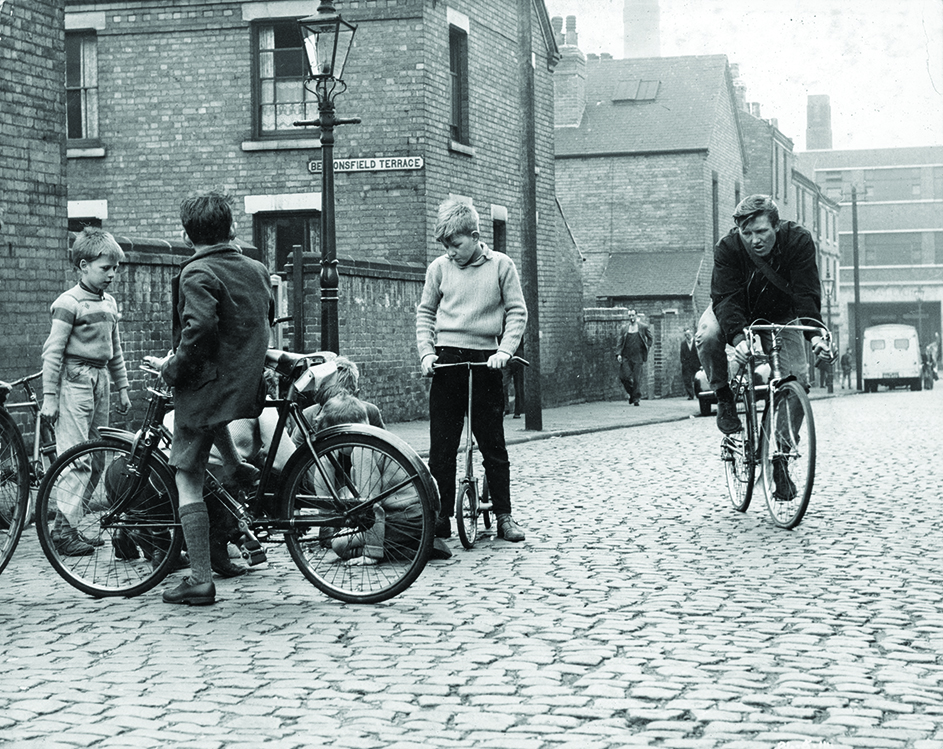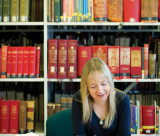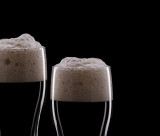
Seaton’s city
November 8th, 2012
“I’m a bloody billygoat trying to screw the world, and no wonder I am, because it’s trying to do the same to me.”
So said the hard-drinking, hard-fighting, hard-loving Arthur Seaton, the Raleigh factory worker in Alan Sillitoe’s 1958 groundbreaking novel Saturday Night and Sunday Morning.
The 1960 film — directed by Karel Reisz — saw Albert Finney bring Sillitoe’s anti-hero to life and was hailed a turning point in British cinema. It is also widely credited with putting Nottingham on the map.
The novel helped frame a cultural moment, set at a time when the working class had a collective identity thanks to trades unions and working men’s clubs. But Seaton has rejected this and was out for himself. If he isn’t “pursuing his rebellion against the rules of love, or distilling them with the rules of war, there was still the vast crushing power of government against which to lean his white-skinned bony shoulder, a thousand of its laws to be ignored and therefore broken”.
It was also the time when youth culture was emerging. Young people realised that they could have an identity and lifestyle that was different from that of their parents. And, in stark contrast to the austerity of the post-war years, they had a spending power like never before.
Saturday Night and Sunday Morning: The ‘Authentic Moment’ in British Photography is inspired by the novel and the film. Shirley Anne Field — who played Doreen, Seaton’s naïve young girlfriend — will open the exhibition at Djanogly Art Gallery on 17 November.
The exhibition aims to capture the essence of the world Sillitoe portrayed. As Sillitoe was writing the novel in Majorca, Nottingham was undergoing a radical social upheaval. Whole areas of the city were razed as new housing developments such as the Clifton Estate changed the face of the city. The Raleigh factory where Seaton worked and his home — the film featured Sillitoe’s family home at 5 Beaconsfield Terrace — are long gone; the University’s Jubilee Campus stands in their place, the Aspire statue symbolic of the hopes and aspirations of the city and its people.
Taking seminal moments from the book and the film, the exhibition explores the depiction of the social changes in contemporary photography, focusing on working class culture in the 50s and 60s. It highlights the work of a generation of photographers drawn to the regions in a bid to capture the authenticity of ordinary lives.
The exhibition is curated by Neil Walker and Anna Douglas. Neil says: “Whereas previous photographic surveys have tended to focus on the ‘swinging’ capital, we wanted to examine a cultural phenomenon which was more regional in spirit and more closely aligned to the spate of accounts of urban working-class life by academics, playwrights, novelists and documentary filmmakers that were making such an impact at the time. We were also interested in those photographers — often working in journalism — who seemed to us to be pursuing a similar realist agenda to the filmmakers of new wave cinema.”
The discovery at the British Film Institute of an archive of photographic stills from the shooting of Reisz’s film was a breakthrough for the organisers, suggesting how Sillitoe’s world could be portrayed.
Neil says: “We have taken liberties with his narrative to interpret the Sunday Morning section of the exhibition in terms of the dawn of this new world … at the end of the book Seaton himself hints at a more settled future life with Doreen in one of the new estates he despises.”
“Our excuse for extending the chronology of the exhibition to the late 60s was to be able to encompass the photography produced for the books by Ken Coates and Bill Silburn at the University on the effects of poor housing in St Ann’s.”
The exhibition features the work of John Bulmer, Graham Finlayson, Roger Mayne, Shirley Baker and Maurice Broomfield, alongside national photographers and more than 33 local amateurs. Including the work of local amateurs was Anna’s idea.
“The introduction of this less-privileged imagery expands the gamut of uses to which photography was put and confounds further our readings of reality and artifice,” says Neil. “We hope that the results will appeal on many levels in capturing the essence of the novel’s time and place as well as providing a snapshot of the country at the point of profound cultural change.”
Image: Saturday Night and Sunday Morning 1960 ©Woodfall/BFI.
Leave a Reply
Other Features

Baptism of fire for WW1 curator
Stories from the First World War are being revealed for the first time at a University […]


